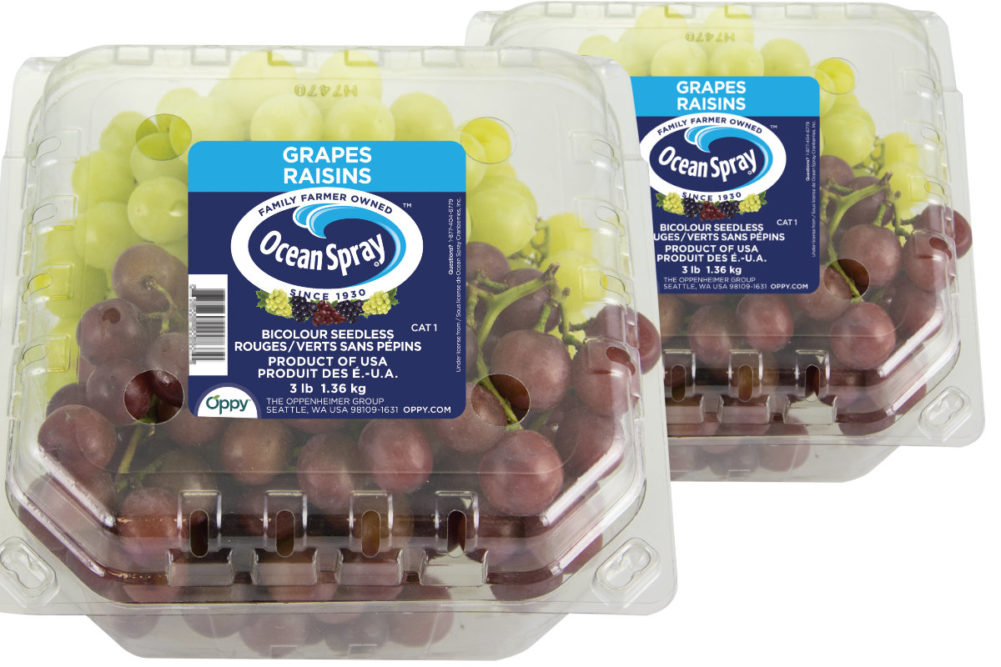KANSAS CITY — Food safety and convenience have never been more important to retail grocery consumers. That’s kept packaged produce suppliers busy finding new and innovative solutions.
Eden Prairie, Minn.-based Robinson Fresh, a division of logistics giant C.H. Robinson, announced in January that it would start shipping fresh produce under its own brand name.
At the six-month mark, it’s looking like a good decision, said Michael Castagnetto, Robinson Fresh’s president.
“The early results are encouraging,” he said. “Our category teams have worked closely with our suppliers across many of our strategic categories from greens, dry veg, tropicals, and citrus items. The feedback from our retail customers around the designs of our packaging has been a point of success.”
When it came to developing packaging for its branded program, Robinson Fresh took a modern approach to the design, with the aim of making it easy for its shoppers to see the freshness and high quality of its produce.
During development, Castagnetto said, Robinson Fresh ran several consumer panels studies to understand what shoppers are looking for in produce packaging.
“One significant finding was consumers want to be able to see the fresh product through a window,” he said.
Another key: when there’s enough space on the package, Robinson Fresh also takes the opportunity to offer recipe ideas for its shoppers, ranging from stir-fried collard greens to kale chips.
Shipping under its own brand in its own packaging has given Robinson Fresh a platform to tell its retail partners and end consumers its story, which is highlighted by the fact that C.H. Robinson has been delivering fresh foods since 1905, Castagnetto said.
Knowing that story builds consumer trust, he added. And with its own brand, Robinson Fresh can write new chapters in the story, including its work in developing and implementing sustainable packaging solutions, partnering with the Sustainable Packaging Coalition and becoming a member of the How2Recycle program.
The Robinson Fresh brand can currently be found on fresh greens, such as kale, collard, turnip, and mustard; dry vegetables including bell peppers, squash, and sweet peppers; a number of tropical items like avocados, mangos, limes, and pineapples; and citrus and bananas.
The company plans to add more items this year and next, Castagnetto said. In addition to its new branded program, Robinson Fresh continues to offer many other fresh products in bulk and for retail private-label programs.
Brand power —across all platforms
The power of a brand name often carries over from brick-and-mortar to digital platforms.
“We’ve noticed that our Ocean Spray line has enjoyed the advantage of brand recognition on ecommerce sites,” said Karin Gardner, executive director marketing for Vancouver, B.C.-based Oppy. “A familiar brand engenders trust within the ecommerce transaction and may also generate an impulse purchase more frequently than unbranded product because the shopper understands the value the branded item will deliver.”
Oppy’s Ocean Spray-branded grape clamshell, in particular, has benefited from this in recent months, Gardner said.
Even with pandemic (hopefully) waning, demand for Oppy’s packaged produce has remained strong, driven in part by ecommerce, Gardner said.
“Packages are more convenient, and they travel well in delivery scenarios. Packaged items remain popular at general retail as well for their perceived safety.”
Avocado category growth —it’s in the bag
Bagged avocados are finding their way into the grocery baskets of more and more US avocado shoppers. Bags now make up more than a quarter of all avocado purchases, and a recent study by the Mission Viejo, Calif.-based Hass Avocado Board (HAB) reveals that purchases of bagged avocados have increased at three times the rate of bulk over a four-year period (2016-2019).
While bagged avocados are becoming more important to the category, 59% of avocado-purchasing households continue to purchase bulk avocados exclusively, and 9% purchase bagged avocados exclusively. However, there is another group of households making a significant impact on category purchase trends. This group purchases a combination of bulk and bagged avocados and makes up the remaining 32% of avocado-purchasing households. These “both” households drove 50% of all avocado purchases in 2019, up from 43% in 2016.
“It’s becoming increasingly important for avocado marketers and retailers to consider their product offerings in this rapidly changing retail marketplace,” said Emiliano Escobedo, executive director of the Hass Avocado Board. “Bulk avocados are an essential part of the category, but bagged avocados continue to drive growth.”
The study also includes key actions and opportunities for the industry to drive sales of hass avocados and suggests that bagged avocados may be one way to attract the high-value “super” avocado shopper. The study revealed that “super” avocado households were more likely than other households to purchase a combination of bulk and bagged avocados. In 2019, more than half of “super” households fell into the “both” household segment.
Keep up with the latest in produce.

